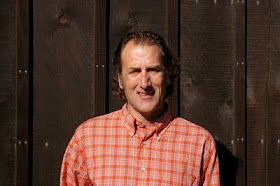 I'm presenting this tasting note today as a public service. If you're thinking about ringing in the Teens tonight in high style, this might be useful. If not, please drink vicariously responsibly.
I'm presenting this tasting note today as a public service. If you're thinking about ringing in the Teens tonight in high style, this might be useful. If not, please drink vicariously responsibly.Louis Roederer Cristal Champagne 2002 ($212)
There are days when it's good to go to work. Cracking open a bottle of Cristal is one of those -- and not just because it's delicious.
When I worked at a major newspaper, we tasted dozens of wines every week, but the only wine I recall every food writer begging to sample was Cristal. People hear that Jay-Z is boycotting it, or that P. Diddy tried to buy every bottle in Arizona for a Super Bowl party, and naturally they're curious. What's all the fuss about?
Partly it's the hope of living like the superstars from the supermarket tabloids. But there's also some anticipatory schadenfreude. Most people don't want to drop $200 on a bottle of Champagne at a retail store, or maybe 3 times that in a nightclub. It would be better overall if people could have a single sip, say, "Ah, Two Buck Chuck is just as good," and live the rest of their lives satisfied with their lot.
I wish I could give everyone that comfort. But I have to tell you, this is a great wine, even more so because it's easy for anyone to appreciate. Plenty of people who buy Cristal couldn't care less about terroir, minerality, balance, etc. They want a great-tasting wine, and Cristal really delivers.
The aromas are of golden pear, wheat toast, Pippin apple, pine resin, and raisins both black and golden. The first taste is ripe golden pear that shifts to slightly tart apple, sweetening to Fuji apple on the lengthy finish. There's a toastiness behind the fruit that adds gravitas, and the finish will please the serious wine fan, but mainly it's exuberant. I was amazed, then remorseful, at how quickly my bottle emptied.
That's as it should be. Cristal doesn't need to be super complex and thought-provoking. This is not a wine consumed at quiet upscale restaurants -- it's drunk at nightclubs, by partiers flashing their cash for a good time. It gives you that. Cristal does what you ask of it, and I don't see how you can want more from a wine, or any product, than that. 96
If you're into value at the end of the decade, I recommend several great bubblies under $20. Click on any of the links to the right between Louis Bouillot and Roederer Estate. (Don't miss Domaine J. Laurens and Scharffenberger.)
Best wishes for 2010.








_-group_at_Adelaide_Zoo.jpg)





